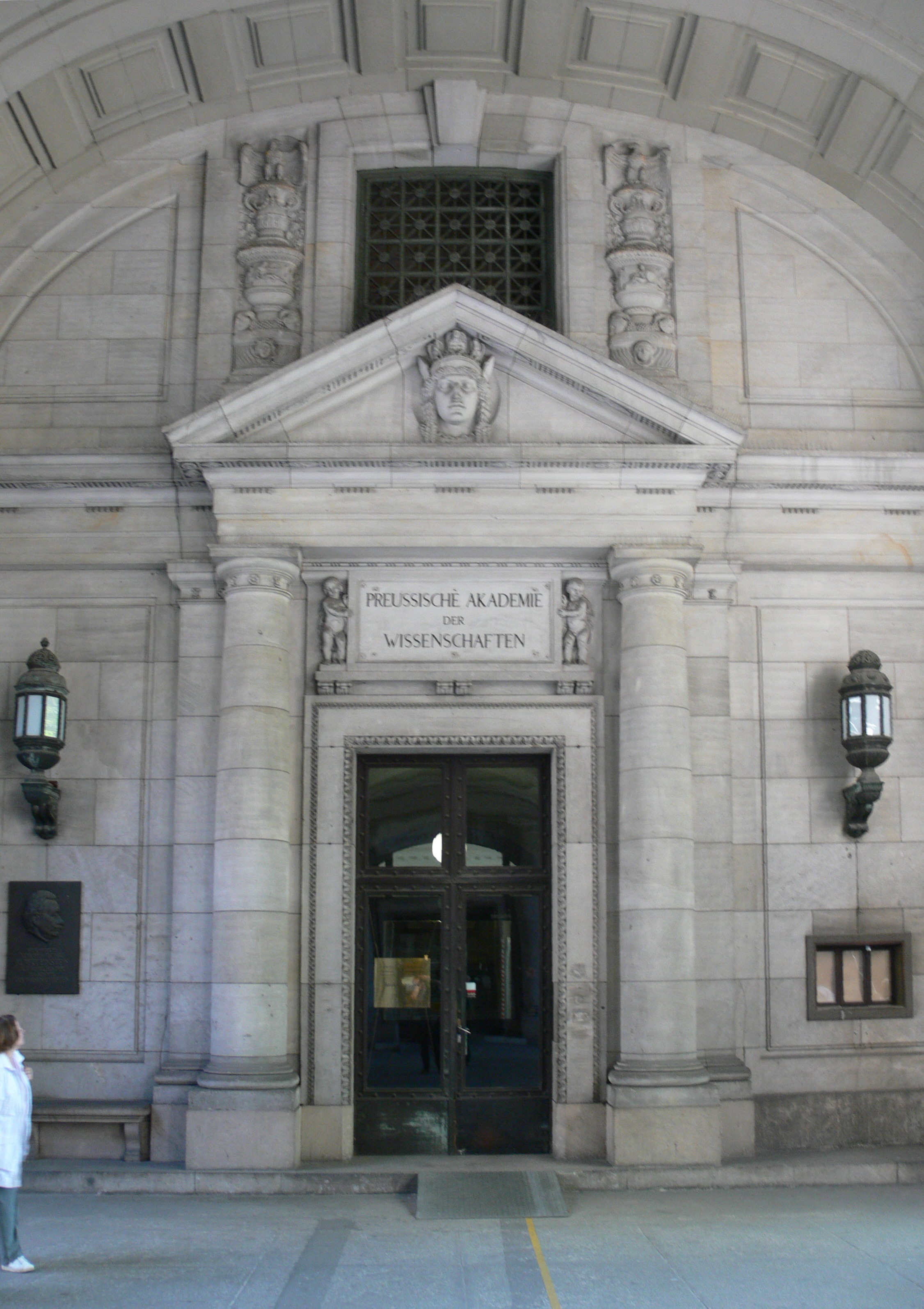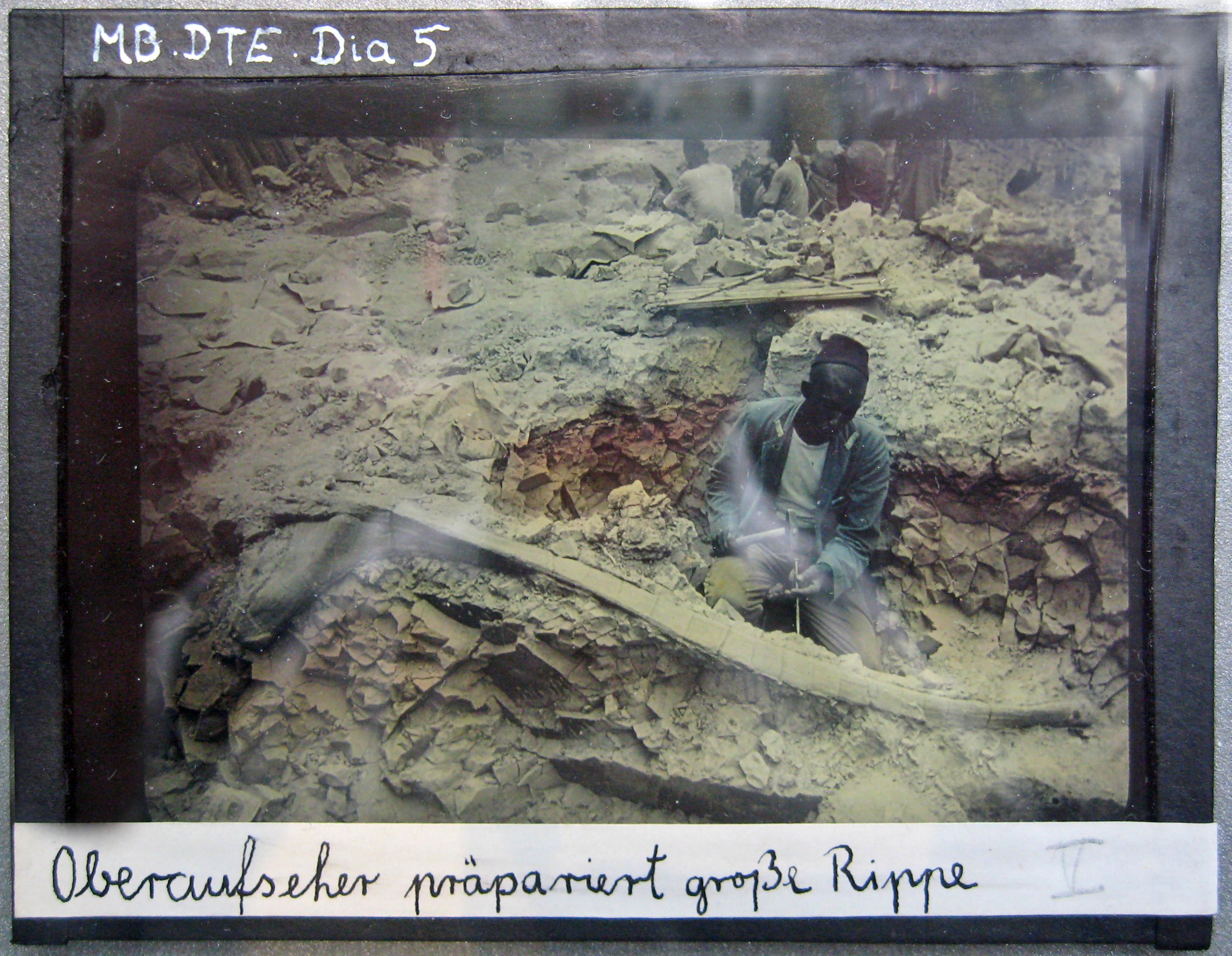|
Werner Janensch
Werner Ernst Martin Janensch (11 November 1878 – 20 October 1969) was a German paleontologist and geologist. Biography Janensch was born at Herzberg (Elster). In addition to Friedrich von Huene, Janensch was probably Germany's most important dinosaur specialist from the early and middle twentieth century. His most famous and significant contributions stemmed from the expedition undertaken to the Tendaguru Beds in what is now Tanzania. As leader of an expedition (together with Edwin Hennig) set up by the Museum für Naturkunde in Berlin, where he worked as a curator, Janensch helped uncover an enormous quantity of fossils of late Jurassic period dinosaurs, including several complete ''Brachiosaurus'' skeletons, then the largest animal ever known. During his long subsequent career (he worked in Berlin from 1914 to 1961), Janensch named several new dinosaur taxa including ''Dicraeosaurus'' (1914) and ''Elaphrosaurus'' (1920). Janensch's ''Brachiosaurus'' were later determi ... [...More Info...] [...Related Items...] OR: [Wikipedia] [Google] [Baidu] |
Janensch
Janensch is a German surname. Notable people with the surname include: * Gerhard Janensch (1860–1933), German sculptor *Paul Janensch (born 1938), American journalist *Werner Janensch Werner Ernst Martin Janensch (11 November 1878 – 20 October 1969) was a German paleontologist and geologist. Biography Janensch was born at Herzberg (Elster). In addition to Friedrich von Huene, Janensch was probably Germany's most impo ... (1878–1969), German paleontologist and geologist {{surname German-language surnames ... [...More Info...] [...Related Items...] OR: [Wikipedia] [Google] [Baidu] |
Brachiosaurus
''Brachiosaurus'' () is a genus of sauropod dinosaur that lived in North America during the Late Jurassic, about 154to 150million years ago. It was first described by American paleontologist Elmer S. Riggs in 1903 from fossils found in the Colorado River valley in western Colorado, United States. Riggs named the dinosaur ''Brachiosaurus altithorax''; the generic name is Greek for "arm lizard", in reference to its proportionately long arms, and the specific name means "deep chest". ''Brachiosaurus'' is estimated to have been between 18 and 22 meters (59 and 72ft) long; body mass estimates of the subadult holotype specimen range from 28.3 to 46.9 metric tons (31.2 and 51.7 short tons). It had a disproportionately long neck, small skull, and large overall size, all of which are typical for sauropods. Atypically, ''Brachiosaurus'' had longer forelimbs than hindlimbs, which resulted in a steeply inclined trunk, and a proportionally shorter tail. ''Brachiosaurus'' is the name ... [...More Info...] [...Related Items...] OR: [Wikipedia] [Google] [Baidu] |
German Paleontologists
German(s) may refer to: * Germany (of or related to) **Germania (historical use) * Germans, citizens of Germany, people of German ancestry, or native speakers of the German language ** For citizens of Germany, see also German nationality law **Germanic peoples (Roman times) * German language **any of the Germanic languages * German cuisine, traditional foods of Germany People * German (given name) * German (surname) * Germán, a Spanish name Places * German (parish), Isle of Man * German, Albania, or Gërmej * German, Bulgaria * German, Iran * German, North Macedonia * German, New York, U.S. * Agios Germanos, Greece Other uses * German (mythology), a South Slavic mythological being * Germans (band), a Canadian rock band * "German" (song), a 2019 song by No Money Enterprise * ''The German'', a 2008 short film * "The Germans", an episode of ''Fawlty Towers'' * ''The German'', a nickname for Congolese rebel André Kisase Ngandu See also * Germanic (other) * ... [...More Info...] [...Related Items...] OR: [Wikipedia] [Google] [Baidu] |
1969 Deaths
This year is notable for Apollo 11's first landing on the moon. Events January * January 4 – The Government of Spain hands over Ifni to Morocco. * January 5 **Ariana Afghan Airlines Flight 701 crashes into a house on its approach to London's Gatwick Airport, killing 50 of the 62 people on board and two of the home's occupants. * January 14 – An explosion aboard the aircraft carrier USS ''Enterprise'' near Hawaii kills 27 and injures 314. * January 19 – End of the siege of the University of Tokyo, marking the beginning of the end for the 1968–69 Japanese university protests. * January 20 – Richard Nixon is sworn in as the 37th President of the United States. * January 22 – An assassination attempt is carried out on Soviet leader Leonid Brezhnev by deserter Viktor Ilyin. One person is killed, several are injured. Brezhnev escaped unharmed. * January 27 ** Fourteen men, 9 of them Jews, are executed in Baghdad for spying for Israel. ... [...More Info...] [...Related Items...] OR: [Wikipedia] [Google] [Baidu] |
1878 Births
Events January–March * January 5 – Russo-Turkish War – Battle of Shipka Pass IV: Russian and Bulgarian forces defeat the Ottoman Empire. * January 9 – Umberto I becomes King of Italy. * January 17 – Battle of Philippopolis: Russian troops defeat the Turks. * January 23 – Benjamin Disraeli orders the British fleet to the Dardanelles. * January 24 – Russian revolutionary Vera Zasulich shoots at Fyodor Trepov, Governor of Saint Petersburg. * January 28 – '' The Yale News'' becomes the first daily college newspaper in the United States. * January 31 – Turkey agrees to an armistice at Adrianople. * February 2 – Greece declares war on the Ottoman Empire. * February 7 – Pope Pius IX dies, after a 31½ year reign (the longest definitely confirmed). * February 8 – The British fleet enters Turkish waters, and anchors off Istanbul; Russia threatens to occupy Istanbul, but does not carry out the threat. * ... [...More Info...] [...Related Items...] OR: [Wikipedia] [Google] [Baidu] |
Waldfriedhof Dahlem
The Waldfriedhof Dahlem ( Dahlem forest cemetery) is a cemetery in Berlin, in the district of Steglitz-Zehlendorf on the edge of the Grunewald forest at Hüttenweg 47. Densely planted with conifers and designed between 1931 and 1933 after the plans of Albert Brodersen, it is one of Berlin's more recent cemeteries. Its graves include those of writers such as Gottfried Benn, composers such as Wolfgang Werner Eisbrenner and entertainers like Harald Juhnke, and put it among the so-called "Prominentenfriedhöfe" or celebrity cemeteries. Graves of notable people * Karl Anton (1898–1979), film director and film producer * Michael Ballhaus (1935–2017), cinematographer * Antoinette Becker (1920–1998), writer * Carl Heinrich Becker (1876–1933), orientalist and politician * Gottfried Benn (1886–1956), poet * Heinz Berggruen (1914–2007), art collector * Frank Michael Beyer (1928–2008), composer * Hans-Otto Borgmann (1901–1977), film composer * Bully Buhlan (1924– ... [...More Info...] [...Related Items...] OR: [Wikipedia] [Google] [Baidu] |
Humboldt-Universität Zu Berlin
Humboldt-Universität zu Berlin (german: Humboldt-Universität zu Berlin, abbreviated HU Berlin) is a German public research university in the central borough of Mitte in Berlin. It was established by Frederick William III on the initiative of Wilhelm von Humboldt, Johann Gottlieb Fichte and Friedrich Ernst Daniel Schleiermacher as the University of Berlin () in 1809, and opened in 1810, making it the oldest of Berlin's four universities. From 1828 until its closure in 1945, it was named Friedrich Wilhelm University (german: Friedrich-Wilhelms-Universität). During the Cold War, the university found itself in East Berlin and was ''de facto'' split in two when the Free University of Berlin opened in West Berlin. The university received its current name in honour of Alexander and Wilhelm von Humboldt in 1949. The university is divided into nine faculties including its medical school shared with the Freie Universität Berlin. The university has a student enrollment of around ... [...More Info...] [...Related Items...] OR: [Wikipedia] [Google] [Baidu] |
Prussian Academy Of Sciences
The Royal Prussian Academy of Sciences (german: Königlich-Preußische Akademie der Wissenschaften) was an academy established in Berlin, Germany on 11 July 1700, four years after the Prussian Academy of Arts, or "Arts Academy," to which "Berlin Academy" may also refer. In the 18th century, it was a French-language institution since French was the language of science and culture during that era. Origins Prince-elector Frederick III of Brandenburg, Germany founded the Academy under the name of ''Kurfürstlich Brandenburgische Societät der Wissenschaften'' ("Electoral Brandenburg Society of Sciences") upon the advice of Gottfried Wilhelm Leibniz, who was appointed president. Unlike other Academies, the Prussian Academy was not directly funded out of the state treasury. Frederick granted it the monopoly on producing and selling calendars in Brandenburg, a suggestion from Leibniz. As Frederick was crowned " King in Prussia" in 1701, creating the Kingdom of Prussia, the Academy ... [...More Info...] [...Related Items...] OR: [Wikipedia] [Google] [Baidu] |
Giraffatitan
''Giraffatitan'' (name meaning "titanic giraffe") is a genus of sauropod dinosaur that lived during the late Jurassic Period (Kimmeridgian–Tithonian stages) in what is now Lindi Region, Tanzania. It was originally named as an African species of ''Brachiosaurus'' (''B. brancai''), but this has since been moved to its own genus. ''Giraffatitan'' was for many decades known as the largest dinosaur but recent discoveries of several larger dinosaurs prove otherwise; giant titanosaurians appear to have surpassed ''Giraffatitan'' in terms of sheer mass. Also, the sauropod dinosaur '' Sauroposeidon'' is estimated to be taller and possibly heavier than ''Giraffatitan''. Most size estimates for ''Giraffatitan'' are based on the specimen HMN SII, a subadult individual, but there is evidence supporting that these animals could grow larger; specimen HMN XV2, represented by a fibula 13% larger than the corresponding material on HMN SII, might have attained in length and in body mass o ... [...More Info...] [...Related Items...] OR: [Wikipedia] [Google] [Baidu] |
Elaphrosaurus
''Elaphrosaurus'' ( ) is a genus of ceratosaurian theropod dinosaur that lived approximately 154 to 150 million years ago during the Late Jurassic Period in what is now Tanzania in Africa. ''Elaphrosaurus'' was a medium-sized but lightly built member of the group that could grow up to long. Morphologically, this dinosaur is significant in two ways. Firstly, it has a relatively long body but is very shallow-chested for a theropod of its size. Secondly, it has very short hindlimbs in comparison with its body. Phylogenetic analyses indicate that this genus is likely a ceratosaur. Earlier suggestions that it is a late surviving coelophysoid have been examined but generally dismissed. ''Elaphrosaurus'' is currently believed to be a very close relative of ''Limusaurus'', an unusual beaked ceratosaurian which may have been either herbivorous or omnivorous. Discovery The type specimen of ''Elaphrosaurus bambergi'' HMN Gr.S. 38–44 was recovered in the Middle Dinosaur Member of the ... [...More Info...] [...Related Items...] OR: [Wikipedia] [Google] [Baidu] |
Dicraeosaurus
''Dicraeosaurus'' (Gr. , ' "bifurcated, double-headed" + Gr. , ' "lizard") is a genus of diplodocoid sauropod dinosaur that lived in what is now Lindi Region, Tanzania during the late Jurassic period. The genus was named for the neural spines on the back of its neck. The first fossil was described by paleontologist Werner Janensch in 1914. Description Unlike most diplodocoids, ''Dicraeosaurus'' had a comparatively large head with a relatively short and wide neck. The neck contained 12 unusually short vertebrae, likely indicating a low-level browser of vegetation no more than off the ground. ''Dicraeosaurus'' also lacked the "whiplash" tail tip typical of diplodocoids. It was smaller than many other diplodocoids, at only in length and , though this still makes it among the larger known members of the family Dicraeosauridae. The genus is notable for the rather tall neural spines protruding from its vertebrae, which it is named for. They were not straight as in some members of ... [...More Info...] [...Related Items...] OR: [Wikipedia] [Google] [Baidu] |


.jpg)





